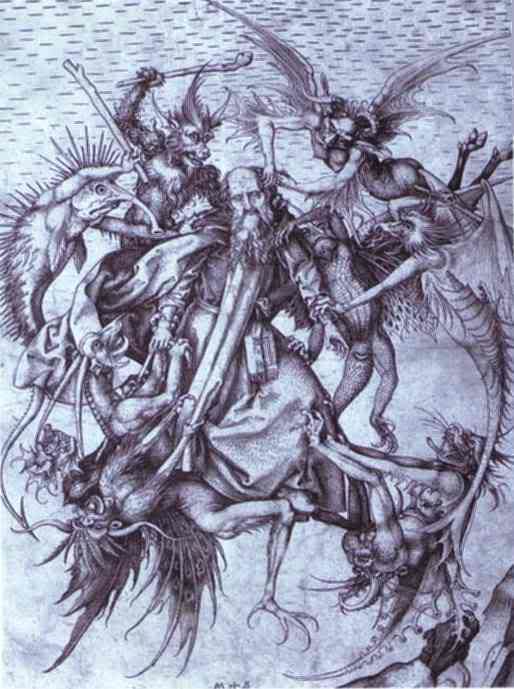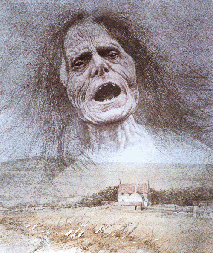
 Anthropological context
Anthropological contextA notion of the transcendent, supernatural or numinous, usually involving entities like ghosts, demons or deities, is a cultural universal shared by all human cultures. In pre-literate folk religions, these beliefs are often summarized under animism and ancestor worship.
In many cultures malignant, restless ghosts are distinguished from the more benign spirits which are the subject of ancestor worship.
Ancestor worship typically involves rites intended to prevent revenants, vengeful spirits of the dead, imagined as starving and envious of the living. Strategies for preventing revenants may either include sacrifice, i.e. the provision of the dead with food and drink in order to pacify them, or the magical banishment of the deceased, preventing them from returning by force. Ritual feeding of the dead is performed in traditions like the Chinese Ghost Festival or the Western All Souls' Day. Magical banishment of the dead is present in many of the world's burial customs. The bodies found in many tumuli (kurgan) had been ritually bound before burial, and the custom of binding the dead persists, for example, in rural Anatolia.
Nineteenth-century anthropologist James Frazer stated in his classic work, The Golden Bough, that souls were seen as the creature within that animated the body.
 Ghosts and the afterlife
Ghosts and the afterlifeAlthough the human soul was sometimes symbolically or literally depicted in ancient cultures as a bird or other animal, it was widely held that the soul was an exact reproduction of the body in every feature, even down to clothing the person wore. This is depicted in artwork from various ancient cultures, including such works as the Egyptian Book of the Dead, which shows deceased people in the afterlife appearing much as they did before death, including the style of dress.
 Common attributes
Common attributesAnother widespread belief concerning ghosts is that they were composed of a misty, airy, or subtle material. Anthropologists speculate that this may also stem from early beliefs that ghosts were the person within the person (the person's spirit), most noticeable in ancient cultures as a person's breath, which upon exhaling in colder climates appears visibly as a white mist. This belief may have also fostered the metaphorical meaning of "breath" in certain languages, such as the Latin spiritus and the Greek pneuma, which by analogy became extended to mean the soul. In the Bible, God is depicted as animating Adam with a breath.
In many traditional accounts, ghosts were often thought to be deceased people looking for vengeance, or imprisoned on earth for bad things they did during life. The appearance of a ghost has often been regarded as an omen or portent of death. Seeing one's own ghostly double or "fetch" is a related omen of death.
White ladies were reported to appear in many rural areas, and supposed to have died tragically or suffered trauma in life. White Lady legends are found around the world. Common to many of them is the theme of losing or being betrayed by a husband or fiancé. They are often associated with an individual family line, as a harbinger of death. When one of these ghosts is seen it indicates that someone in the family is going to die, similar to a banshee.
Legends of ghost ships have existed since the 18th century; most notable of these is the Flying Dutchman. This theme has been used in literature in The Rime of the Ancient Mariner by Coleridge.
 Locale
LocaleA place where ghosts are reported is described as haunted, and often seen as being inhabited by spirits of deceased who may have been former residents or were familiar with the property. Supernatural activity inside homes is said to be mainly associated with violent or tragic events in the building's past such as murder, accidental death, or suicide — sometimes in the recent or ancient past. Amongst many cultures and religions it is believed that the essence of a being such as the 'soul' continues to exist. Some philosophical and religious views argue that the 'spirits' of those who have died have not 'passed over' and are trapped inside the property where their memories and energy are strong.
No comments:
Post a Comment